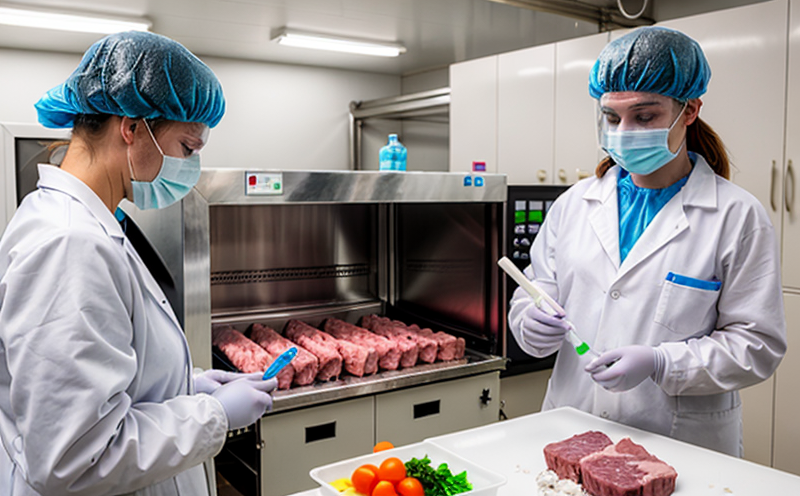USDA FSIS STEC Testing in Meat Products
The presence of Shiga toxin-producing Escherichia coli (STEC), particularly O157:H7, poses a significant public health risk. The U.S. Department of Agriculture's Food Safety and Inspection Service (FSIS) has stringent regulations aimed at preventing the entry of STEC into the food supply chain. USDA FSIS STEC testing in meat products is a critical component of this regulatory framework.
The goal of this service is to ensure that meat products comply with federal safety standards, thereby protecting consumers from potential health risks associated with contaminated food. This article delves into the nuances of performing STEC testing on meat products, focusing on compliance and the importance of accurate and timely analysis in safeguarding public health.
The process begins with proper sample collection, which involves isolating the meat matrix to ensure that only viable microorganisms are tested. Following collection, samples are transported under controlled conditions to prevent contamination or spoilage. Once received at our laboratory, preliminary testing is conducted using methods such as enrichment broth cultures followed by isolation on selective media.
Advanced detection techniques like PCR (Polymerase Chain Reaction) and ELISA (Enzyme-Linked Immunosorbent Assay) are employed to identify the presence of Shiga toxins. These technologies allow for rapid identification, enabling prompt action if positive results are obtained. The use of validated methods ensures that false positives or negatives are minimized.
Upon confirmation of STEC presence, the laboratory provides detailed reports outlining all pertinent information including species identification, toxin type, and concentration levels detected in parts per billion (ppb). Compliance officers can then take necessary steps to recall contaminated products from distribution channels, ensuring consumer safety. This proactive approach not only adheres to regulatory requirements but also enhances brand reputation by demonstrating a commitment to product safety.
Our laboratory uses state-of-the-art equipment and employs highly skilled technicians who adhere strictly to established protocols. Regular calibration of instruments ensures consistent results across all tests performed, further enhancing reliability and accuracy. By leveraging these advanced capabilities, we offer clients peace of mind knowing that their products meet stringent quality standards.
In summary, USDA FSIS STEC testing is an essential service for maintaining food safety in the meat industry. It plays a vital role in safeguarding public health by identifying potentially harmful pathogens early enough to implement corrective measures effectively. As such, this testing serves as both a regulatory requirement and a valuable tool for quality assurance programs within organizations.
Why It Matters
The importance of USDA FSIS STEC testing cannot be overstated given its direct impact on public health. Shiga toxin-producing E. coli, especially serotype O157:H7, has been linked to severe illnesses including hemolytic uremic syndrome (HUS), which can lead to kidney failure and other serious complications.
Meat products are particularly susceptible to contamination due to the nature of their production process where raw materials come into contact with various surfaces during processing. Therefore, rigorous testing protocols must be enforced throughout every stage of manufacturing to minimize risks effectively.
The consequences of failing to comply with these regulations can be severe both financially and reputationally for businesses involved in the meat industry. A single outbreak linked back to improperly handled products could result in massive recalls, loss of sales, increased insurance premiums, and damage to brand image among other issues.
On a broader scale, adhering to USDA FSIS standards helps maintain consumer trust which is crucial for long-term success within the industry. Consumers expect safe, high-quality meat products free from harmful contaminants. By participating in this testing program, companies demonstrate their commitment to providing such products, thus fostering customer loyalty and confidence.
In conclusion, the significance of USDA FSIS STEC testing lies not only in meeting legal requirements but also in upholding ethical standards that prioritize public health and consumer satisfaction. This practice ensures that meat products remain safe for consumption while contributing positively towards overall food safety initiatives.
Applied Standards
| Standard Reference | Description |
|---|---|
| FDA 410.1 | Performance standards for E. coli O157:H7 in beef products. |
| FSIS 9340-2 | Interim final rule regarding the implementation of HACCP principles. |
| AAMI T16-A2 | Methods for isolation and identification of Shiga toxin-producing E. coli (STEC) in meat products. |
| ISO 17025 | Specific requirements for the competence of testing laboratories. |
Competitive Advantage and Market Impact
Implementing robust USDA FSIS STEC testing programs offers numerous competitive advantages that can significantly impact a company's market position. Firstly, compliance with these stringent standards sets companies apart from competitors who may not adhere as closely to such protocols. This commitment to excellence in product safety establishes trustworthiness and reliability among consumers.
Secondly, early detection of STEC through comprehensive testing allows businesses to respond quickly when issues arise, minimizing disruptions to supply chains and reducing costs associated with recalls or other corrective actions. Such agility enhances operational efficiency and resilience against potential crises.
Moreover, participating in this testing program signals leadership within the industry regarding proactive measures for maintaining food safety standards. This forward-thinking approach can attract more customers who prioritize health and well-being over cost considerations alone. Consequently, companies gain a competitive edge by appealing to discerning consumers seeking quality assurances beyond basic product features.
In summary, investing in USDA FSIS STEC testing not only fulfills regulatory obligations but also drives strategic initiatives aimed at enhancing market competitiveness and reputation. By prioritizing public health through rigorous testing practices, organizations position themselves favorably amidst evolving consumer preferences and regulatory landscapes.





